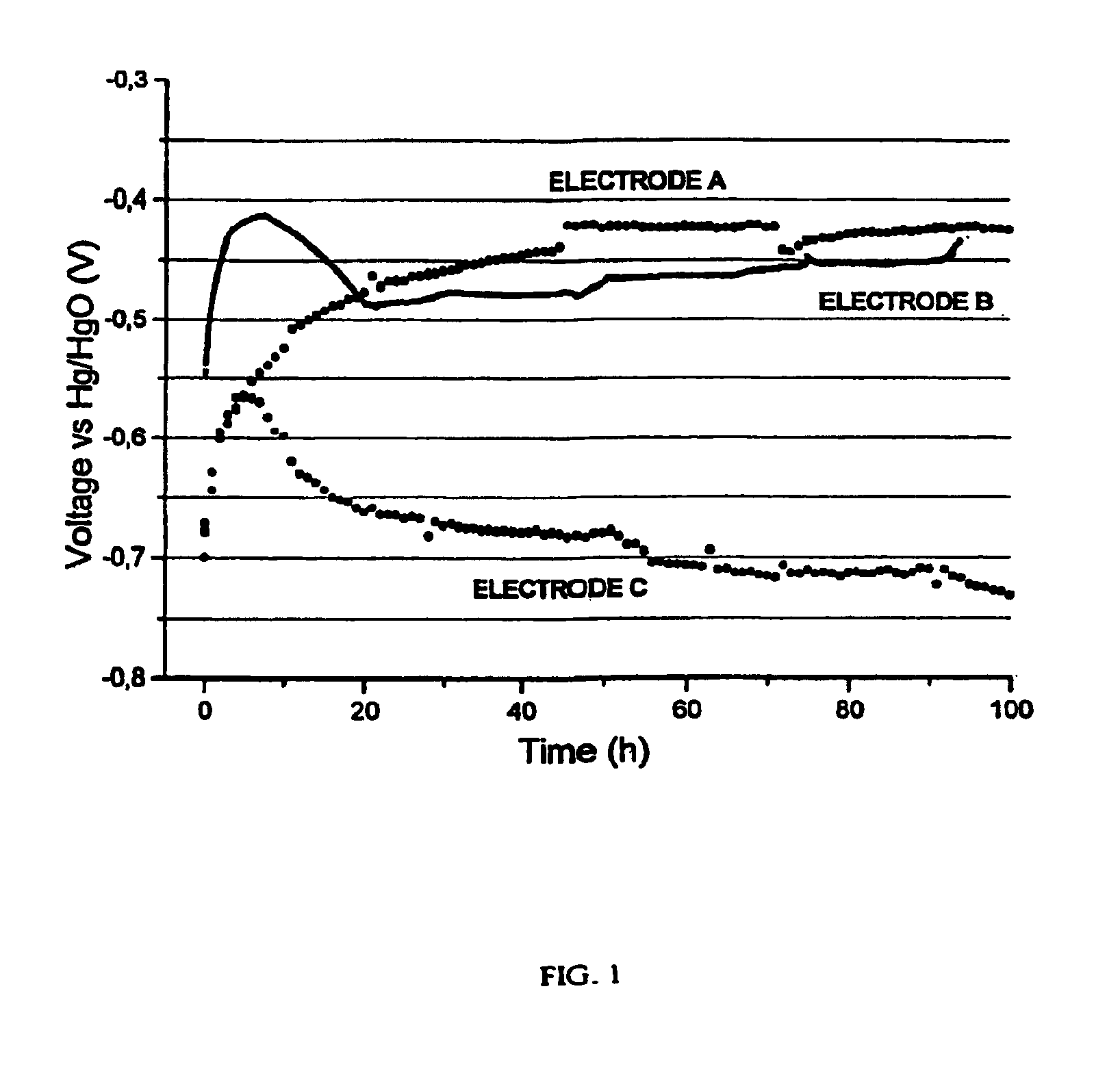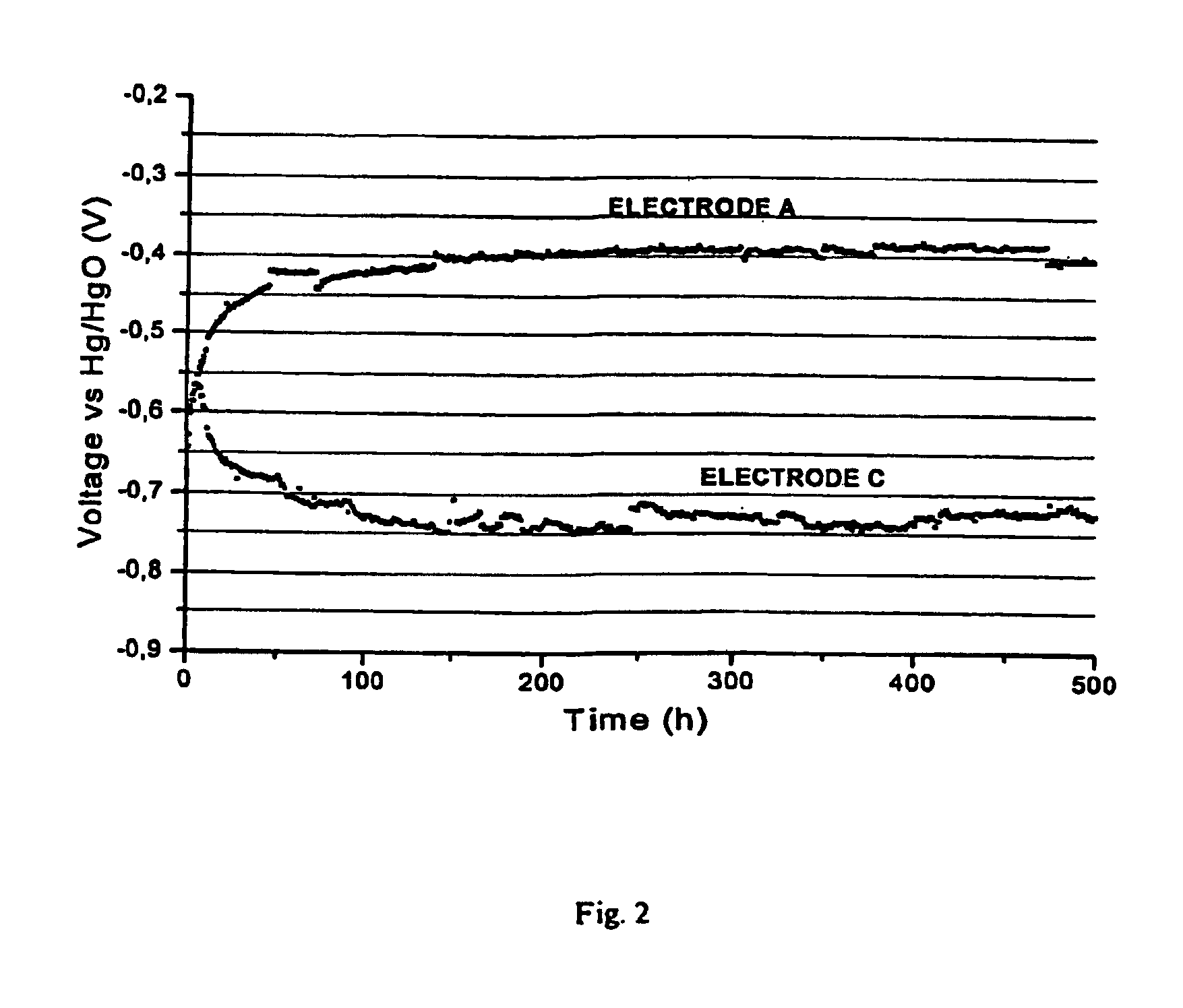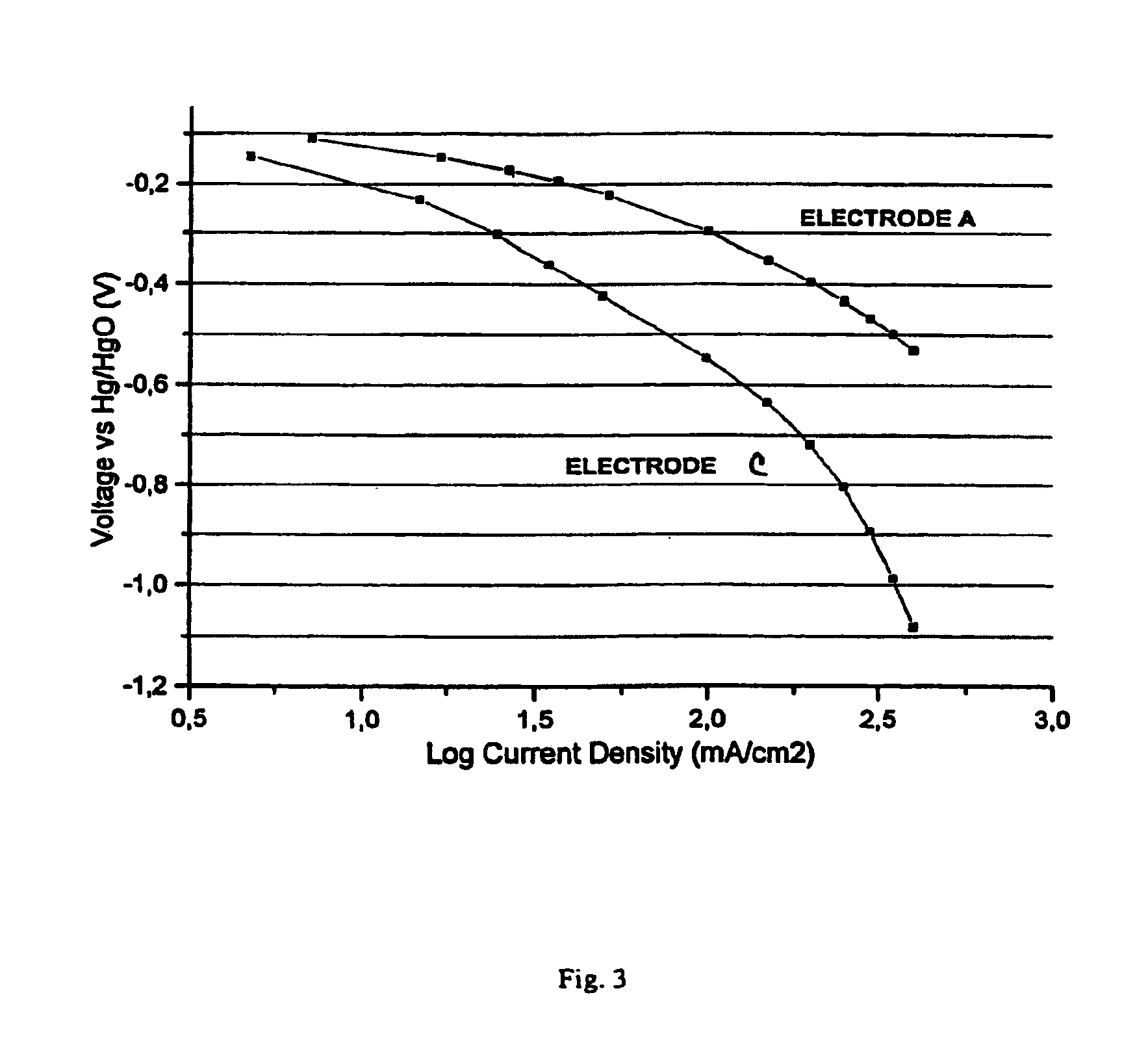Gas diffusion electrodes containing modified carbon products
a technology of carbon products and gas diffusion electrodes, applied in the field of electrodes, can solve the problems of low catalyst utilization, difficult simultaneous obtaining the required porosity and firmness of the layers provided on the support, and the dramatic deterioration of the electrode's performance, and achieve the effects of extending the service life of the electrode, affecting the performance, and poor catalyst utilization
- Summary
- Abstract
- Description
- Claims
- Application Information
AI Technical Summary
Benefits of technology
Problems solved by technology
Method used
Image
Examples
example 1
(0.5 mmol / g Treatment with 3-Trifluoromethyl Aniline)
Preparation of a Hydrophobic Carbon Black Product with Diazonium Salt
[0048]This example illustrates the preparation of a hydrophobic carbon black product of the present invention. A fluffy VXC-72R carbon black with a surface area of 254 m2 / g and a DBPA of 192 cc / 100 g was used. Forty grams of the fluffy carbon black were added to a solution of 3.22 g of 3-trifluoromethyl aniline dissolved in 900 g of de-ionized water and 1.8 g of 70% nitric acid at 70° C. Then 100 mL of iso-propanol was added to assist the wetting of carbon black. To the reaction solution, 1.38 g of sodium nitrite dissolved in 30 g of deionized water was added drop by drop over a period of several minutes and stirred rapidly, to produce a diazonium salt, which reacted with the carbon black. The resulting reaction mixture was stirred rapidly for two more hours before cooled back to room temperature. Surface modified carbon black product was then filtered out by vac...
example 2
(0.25 mmol / g Treatment with 3-Trifluoromethyl Aniline
Preparation of a Hydrophobic Carbon Black Product with Diazonium Salt
[0049]Modified carbon black product of this example was prepared following the procedure described in Example 1; except, 1.61 g of 3-trifluoromethyl aniline, 0.9 g of nitric acid, and 0.69 g of sodium nitrite were used. The carbon black product contained 0.68% of fluorine (equivalent to 0.12 mmol / g of surface 3-trifluoromethyl-phenyl attachment to carbon black) after Soxhlet extraction with methanol overnight.
example 3
(0.1 mmol / g Treatment with 3-Trifluoromethyl Aniline)
Preparation of a Hydrophobic Carbon Black Product with Diazonium Salt
[0050]Modified carbon black product of this example was prepared following the procedure described in Example 1; except, 0.64 g of 3-trifluoromethyl aniline, 0.36 g of nitric acid, and 0.28 g of sodium nitrite were used. The carbon black product contained 0.30% of fluorine (equivalent to 0.05 mmol / g of surface 3-trifluoromethyl-phenyl attachment to carbon black) after Soxhlet extraction with methanol overnight.
PUM
 Login to View More
Login to View More Abstract
Description
Claims
Application Information
 Login to View More
Login to View More - R&D
- Intellectual Property
- Life Sciences
- Materials
- Tech Scout
- Unparalleled Data Quality
- Higher Quality Content
- 60% Fewer Hallucinations
Browse by: Latest US Patents, China's latest patents, Technical Efficacy Thesaurus, Application Domain, Technology Topic, Popular Technical Reports.
© 2025 PatSnap. All rights reserved.Legal|Privacy policy|Modern Slavery Act Transparency Statement|Sitemap|About US| Contact US: help@patsnap.com



